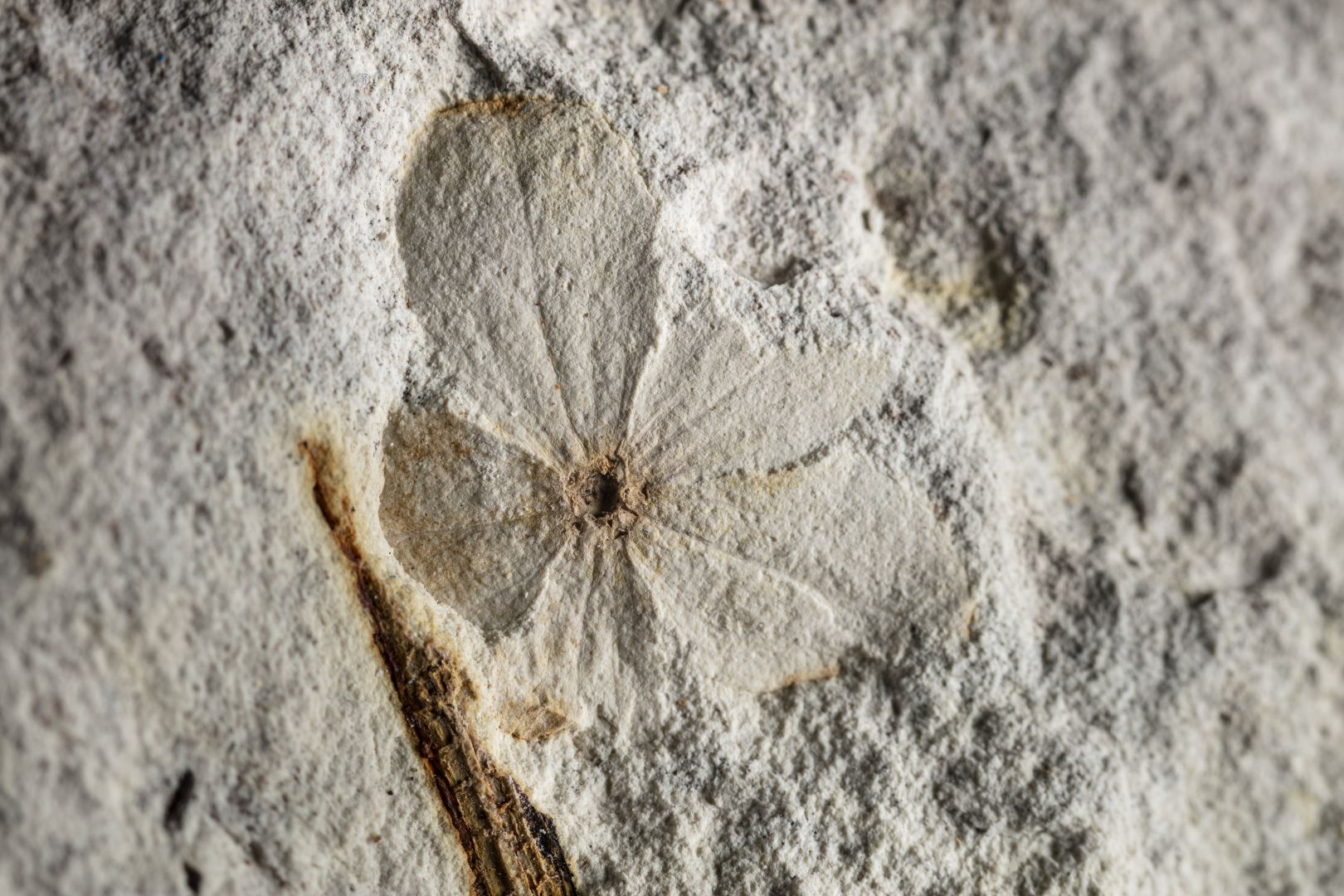FLORA OF THE NEOGENE - 2. view
Chaneya oeningensis
Flower of a Rutaceae. It is named after Öhningen, Germany town, from where the species was first described. The Öhningen site is rich in Miocene remains especially fossils.
This find, with Middle Miocene age comes from the diatomite mine near Erdőbénye. The area was once covered by a lake, into which springs containing silicic acid flowed thanks to nearby active volcanoes. As a result, the diatoms proliferated, and after their death, their skeletons settled and created the diatomaceous layers. The fallen leaves of the plants near the lake preserved in these layers in the form of impressions.
The find was given as a present to the Herman Ottó Museum by Dóra Veronika Barta.
